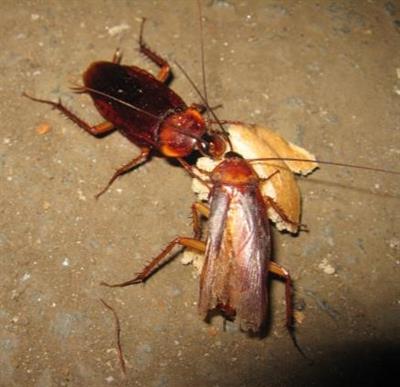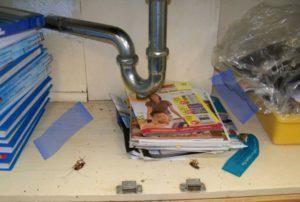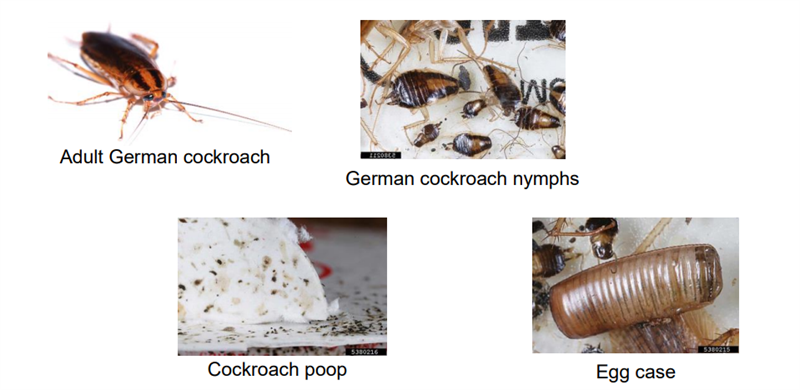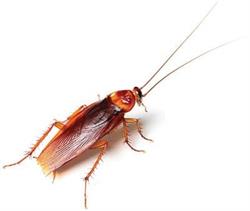 School & Home Integrated Pest Management (IPM) Newsletter – May 2018
School & Home Integrated Pest Management (IPM) Newsletter – May 2018
View this newsletter as a PDF.
Editor: Shujuan (Lucy) Li, lisj@cals.arizona.edu
Authored by Janet Hurley, Texas AgriLife Extension, A&M University
System and Dawn H. Gouge, University of Arizona.
 The school year is ending and that means summer cleaning, repairing and reviewing IPM practices will soon begin. Nevertheless, summers can be opportunities for pests. This newsletter is to help you prepare for the summer while sending pests packing.
The school year is ending and that means summer cleaning, repairing and reviewing IPM practices will soon begin. Nevertheless, summers can be opportunities for pests. This newsletter is to help you prepare for the summer while sending pests packing.
We hope that summer will bring some well-deserved rest time for school staff, faculty and students. However, pests do not take time off over the summer, and increases in temperature can increase pest activity. So what is your best defense?
Teachers: Get your classroom ready for summer; organize and place supplies in storage containers so the custodians can deep clean the room thoroughly.
 Before school ends be sure to plan who will take home classroom pets, food items (including edible art projects), and other items you would like out of the classroom. Be sure to remove any and all open containers of food, including pet food, edible art supplies, and any snacks that are not in airtight pest-resistant containers.
Before school ends be sure to plan who will take home classroom pets, food items (including edible art projects), and other items you would like out of the classroom. Be sure to remove any and all open containers of food, including pet food, edible art supplies, and any snacks that are not in airtight pest-resistant containers.
Custodians: As you clean the campus, be on
the lookout for pests and signs of pests. Make note of pest droppings, egg cases, dead insects, and other indicators that mice or cockroaches are living on campus. Report findings to your IPM Coordinator, or pest management point person for your district.
 While the dead cockroaches in this cabinet need to be removed, entrance points into the classroom from outside are ultimately how the American cockroaches gained access to the room in the first place. Pestproofing external doorways and sealing around wall penetrations like plumbing and electrical conduits is the sustainable fix. If an indoor breeding cockroach species such as the German cockroach is found, baiting to eliminate the infestation will be necessary.
While the dead cockroaches in this cabinet need to be removed, entrance points into the classroom from outside are ultimately how the American cockroaches gained access to the room in the first place. Pestproofing external doorways and sealing around wall penetrations like plumbing and electrical conduits is the sustainable fix. If an indoor breeding cockroach species such as the German cockroach is found, baiting to eliminate the infestation will be necessary.
The German cockroach can be recognized as an adult by the two dark parallel lines running from the back of the head to the wings. This cockroach proliferates in warm, moist environments, and is most commonly found in kitchens near dishwashers, sinks, and food storage areas. They may also be found in classrooms and athletic locker rooms.

 Food service: Kitchen summer vacation preparation is often extensive as detailed cleaning gets underway. This is often the time when drains can be maintained clear of all organic matter, and floors get power washed. It is critical that staff place food items like condiments into rubberized sealed containers, so that items cannot be contaminated. After the floors are finished food service staff should ensure that all food processing equipment is cleaned inside and out. If interior areas are not completely clear of food debris it can become a food source for pests.
Food service: Kitchen summer vacation preparation is often extensive as detailed cleaning gets underway. This is often the time when drains can be maintained clear of all organic matter, and floors get power washed. It is critical that staff place food items like condiments into rubberized sealed containers, so that items cannot be contaminated. After the floors are finished food service staff should ensure that all food processing equipment is cleaned inside and out. If interior areas are not completely clear of food debris it can become a food source for pests.
Many pest species are scavengers and will utilize a variety of foods. But starches, sweets, grease, and meat remnants are rich food. For a German cockroach the inside of a discarded milk container, a butter smear, or dropped French fry is a veritable banquet of delights.
IPM coordinators and pest management professionals: Monitoring should continue during summer months even if the school campus in not in heavy use. Sticky monitoring traps near external doors, floor drains, and those in food preparation, serving, and storage areas will alert you to issues that can be addressed easily while students are not onsite. Remind food service and booster club contacts that the IPM coordinator and pest management professionals will need to access food storage rooms during summer.
Facility managers: Take time during the summer to organize your IPM paperwork and reporting (if that applies to you). Decide what is working well or not as the case may be. Find patterns on campuses with reoccurring challenges and investigate regular or common issues.
Landscape and grounds: Summer months on campus grounds can be very busy times.
Monitor closely for mosquito breeding sites. Remember the most effective fire ant treatments take time, and should be undertaken soon after school breaks (it is often too late the week before students return). Report not only weeds, but insects, and unwelcome mammal pests also.
 Everyone: If you can insert a pencil into a gap under or around a door, a young mouse can enter the building. If there are gaps with the width of a quarter cockroaches, scorpions, crickets, etc. can enter. Report pest entry points, many things are not a problem if they remain on the outside of a building. Report obvious piles of poop or stains on walls, birds or bats can roost in areas leaving telltale signs that indicate nesting or entry points into a building. Rodents will poop in areas they frequent regularly during the nighttime hours. Report exterior waste receptacles or dumpsters attracting flies or venomous bees or wasps.
Everyone: If you can insert a pencil into a gap under or around a door, a young mouse can enter the building. If there are gaps with the width of a quarter cockroaches, scorpions, crickets, etc. can enter. Report pest entry points, many things are not a problem if they remain on the outside of a building. Report obvious piles of poop or stains on walls, birds or bats can roost in areas leaving telltale signs that indicate nesting or entry points into a building. Rodents will poop in areas they frequent regularly during the nighttime hours. Report exterior waste receptacles or dumpsters attracting flies or venomous bees or wasps.
 If you observe multiple American cockroaches inside school buildings on monitoring traps or simply around, it could be that you have poor fitting doors allowing ingress or dry sewer lines; floor drain water traps can dry out if unused during the summer months allowing the large American cockroaches (also called sewer roaches) to enter.
If you observe multiple American cockroaches inside school buildings on monitoring traps or simply around, it could be that you have poor fitting doors allowing ingress or dry sewer lines; floor drain water traps can dry out if unused during the summer months allowing the large American cockroaches (also called sewer roaches) to enter.
Take a little time for professional development: Self-paced training modules are available for every
member of the school community http://articles.extension.org/pages/73468/self-pacedlearning-page-for-urban-ipm.